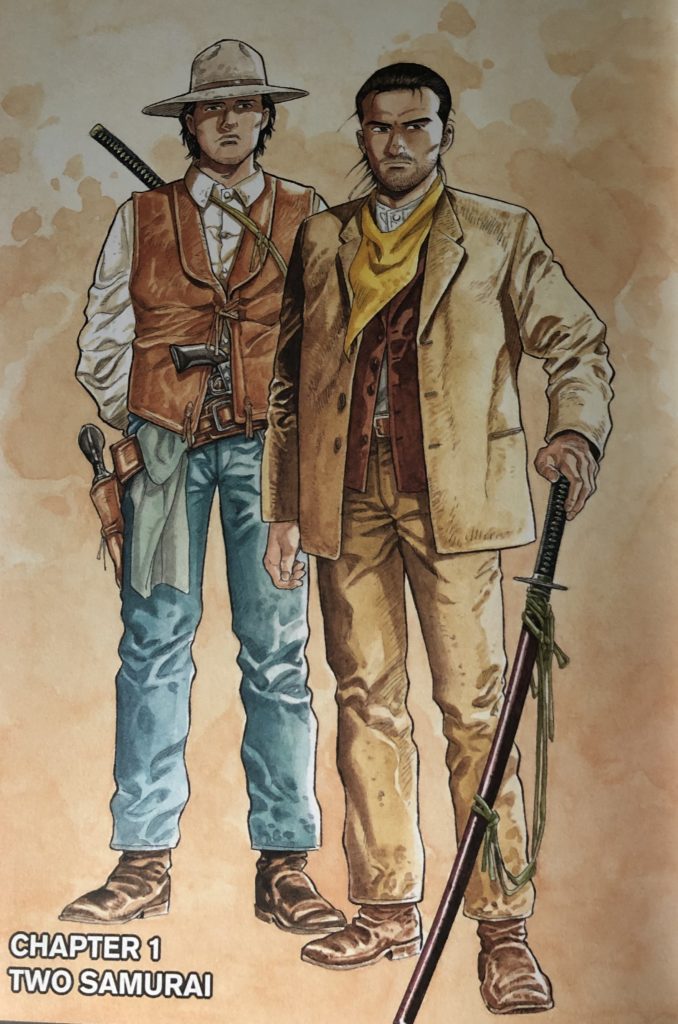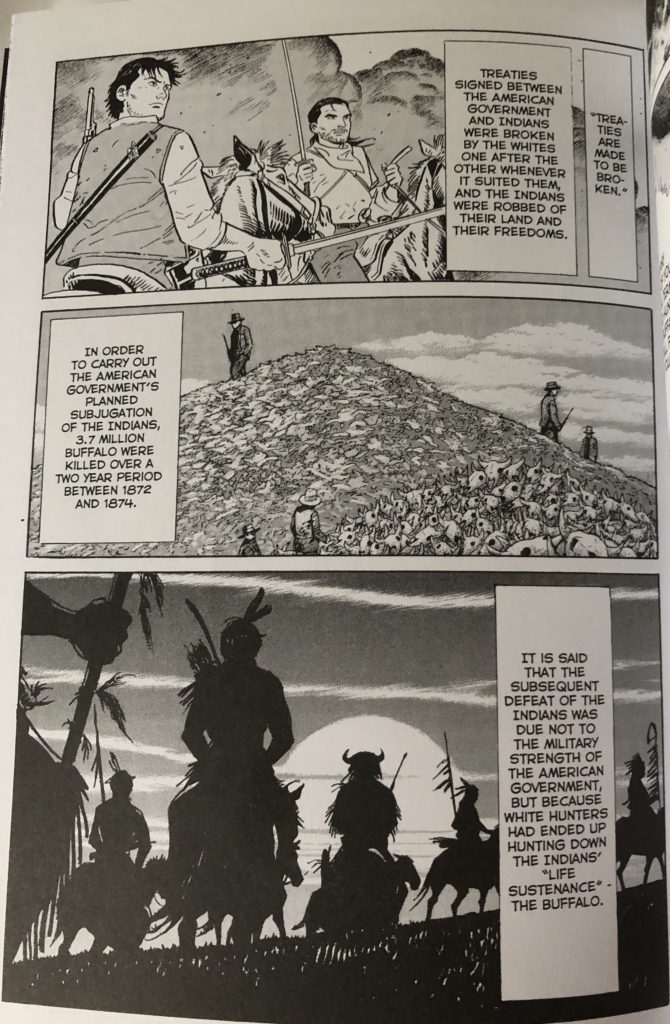Sky Hawk Review
“I am curious, and a little anxious, to find out how the English reader will appreciate a Western imagined by a Japanese” – Jirō Taniguchi.
It’s weird to think about how Westerns used to dominate the media, whether it be the many films being produced in Hollywood during the early days of cinema or comic strips and advertisements depicting the stereotypical Stetson and boots. Westerns eventually fell out of favour as the space race began during the 60s and since then Westerns have been more of a rarity, and they’re seldom seen in Japanese mainstream manga.
Originally released in 2002 in Japan and now being made available in 2019 by English publisher FANFARE in collaboration with Spanish publisher Ponent Mon, Sky Hawk is a Western epic as imagined by the late and talented mangaka Jirō Taniguchi.
It tells the story of two former samurai, Hikosaburô Soma and Manzô Shiotsu, who in May 1869 crossed to San Francisco on an immigrant ship alongside a group of Aizu Domain to seek a new world. The two samurai thought they had left behind the way of Bushido but once again had found themselves in a place where they were forced to live as warriors, becoming embroiled in the awful conflicts between the Native American tribes and the American government.

Their involvement is thanks to Soma saving a Native American woman called Running Deer, a member of the Oglala Sioux Tribe that was kidnapped and sold at the local Trading Post who had run away to save her unborn child. When bounty hunters arrive to reclaim her and some gold-dust she stole, Soma leaps into action, utilising his samurai skills and incapacitating the men. As cowardly actions are taken by the disgruntled bandits, Chief Crazy Horse other Oglala tribe members intervene and thank the men for their help, offering them food and treatment.
The plot of Sky Hawk is brisk in pace, featuring frequent passages of time which give the ten-chapter manga a larger scale than anticipated. The bond between Soma and Shiotsu and their integration into the Oglala tribe is a fascinating means of quickly establishing the lore and beliefs of the Native Americans whilst also explaining the central antagonistic force in the form of the American Government and their seemingly endless army of cavalrymen. They are taught the ways of the tribe and, in return, teach them their fighting techniques like jujitsu and other methods of close combat and Soma uses his sword throughout to deliver devastating blows to the opposition.
The former Samurai experience first-hand the real-life struggles of their new allies, reflected in an effective segment wherein the men are taken on a buffalo hunt which emphasises the significance of wasteful slaughter with insightful commentary on how the Buffalo were gradually being wiped out due to trophy hunting and bragging rights. They also come to blows with members of the Crow tribe, proud warriors who end up siding with the American army to survive. It’s a brutal and bloody battle but the two prove themselves and discard their Japanese names to bear the titles “Sky Hawk” and “Winds Wolf”, names based on their individual characteristics in combat.

There are also various depictions of failed negotiations and trade agreements between the Native Americans and American Government officials as the latter fail to come to an understanding towards the significance of the formers’ beliefs on the land and especially the sacred Black Hills, which are considered a literal goldmine for supplies usable for the grand expansion of the Northern Pacific Railway.
Throughout Sky Hawk, we get frequent skirmishes between the Native Americans and American cavalrymen, and though the action set-pieces are well-crafted and stylish, every battle has weight behind it, as even when there’s a victory for the protagonists, the consequences and casualties are heavy. A poignant example of this is when a character dies around the halfway point, there is barely a chance to grieve before everyone must carry on surviving and avoid being wiped out, though it leads Sky Hawk to ponder just what it is they’re fighting for anymore.
That is not to say that the action in Sky Hawk doesn’t provide entertainment as towards the end of the story we get two major battles. One is reminiscent of a mission from Red Dead Redemption wherein various tribes attack the mining settlement of Custer City, fighting through the mine shafts and blowing it up from within. We also get to bear witness to the infamous Battle of the Little Bighorn, a battle that followed not too long after the American Government made their official declaration of war against the Native American people, otherwise known as “Custer’s last stand.” Without spoiling too much, the victory at this historic battle quickly feels hollow and the ending is especially poignant, truly reflective of the senseless destruction of the Native Americans’ way of life.
Sky Hawk was a fascinating read as I went into it completely blind and was swiftly hooked thanks to Taniguchi’s storytelling and the likeable leads he created. It is also clear that Taniguchi did a lot of research as the manga is filled with dates and facts on the events that occurred during the story in real life which help to give an authenticity that ensures that even readers with little knowledge of the subject matter can still become engrossed and sympathise with the conflict.
The translation for Sky Hawk was arranged with FURARI Co., Ltd., through le Bureau des Copyrights Français, Tokyo. Translator Kumar Sivasubramanian and assistant translator Chitoku Teshima do a fine job, especially in regards to the handling of the more fact-heavy sections of the manga.
There could be some criticism drawn towards how the American side is given little nuance beyond greed and power, yet this is largely the reality of the events that took place. Perhaps there is potential for a story that would show their side in a more sympathetic light, but overall Taniguchi keeps his focus where it is needed and crafts a poignant adventure that is as effective in its storytelling as it is gorgeous in its artwork. Sky Hawk is a unique manga that is recommended for anyone looking for something a bit different, especially those interested in Westerns.
Read an extract at the publisher’s website here.
Copyright 2002-2018 Ponent Mon


